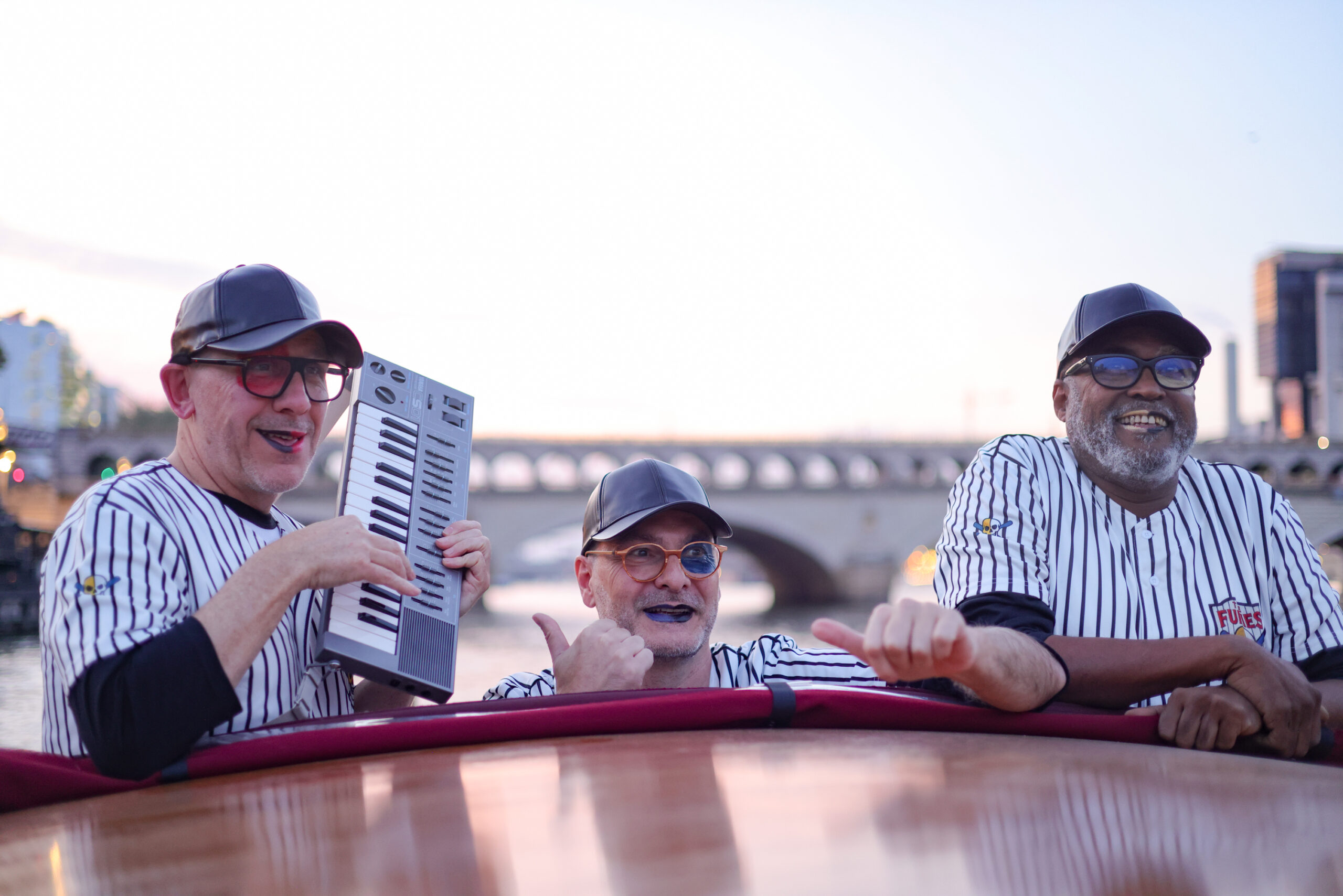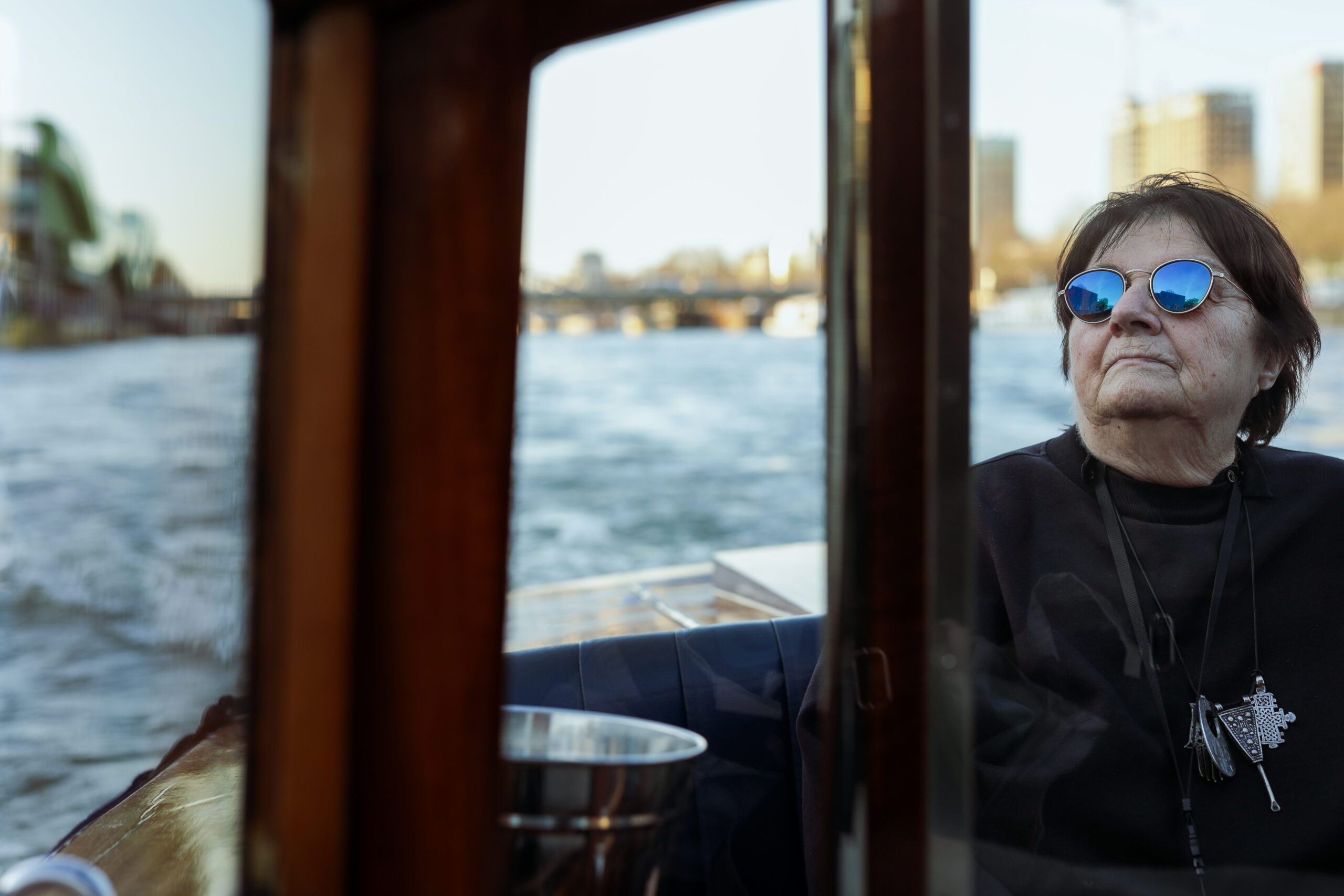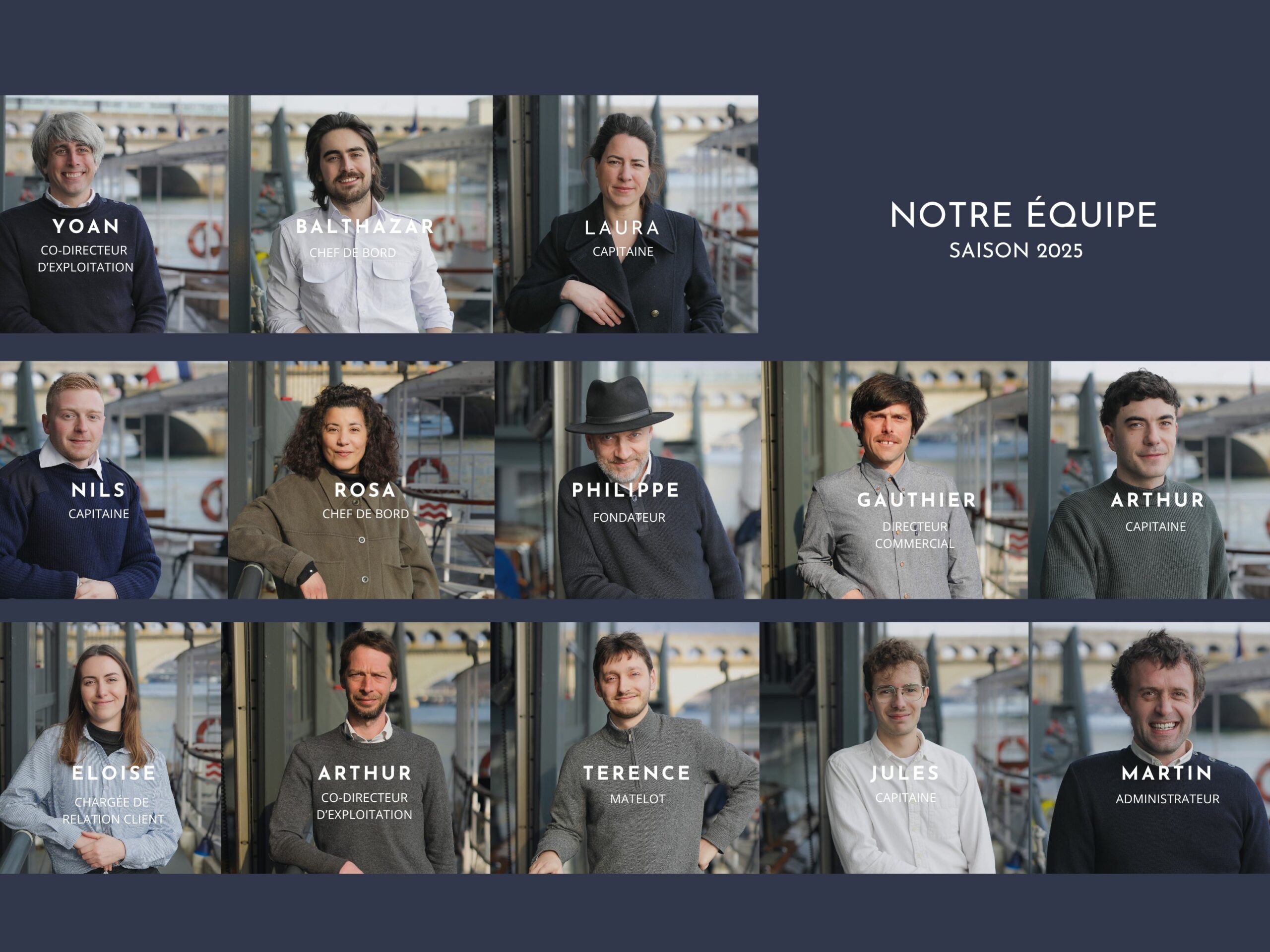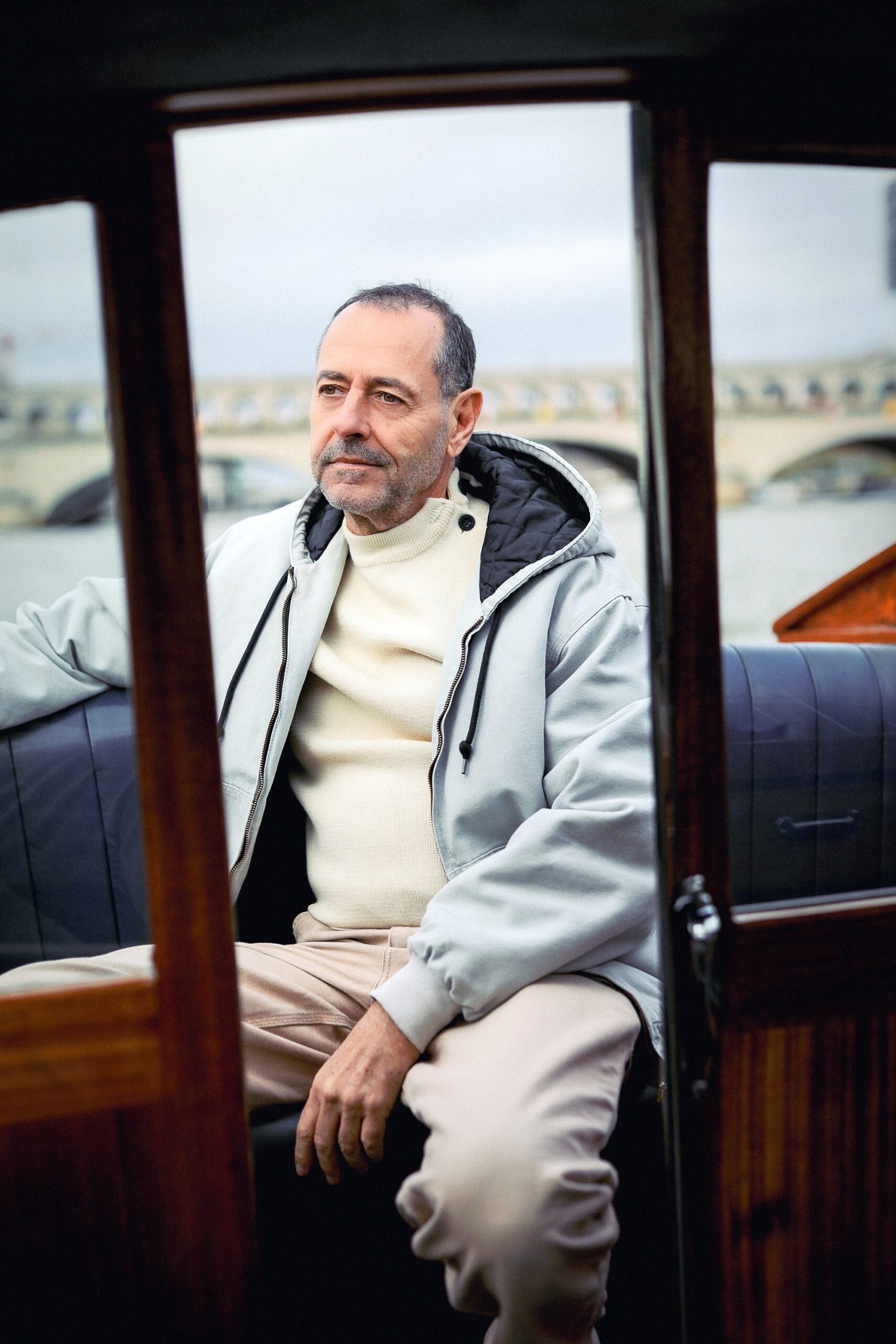The bridges of Paris. Episode 1 : The Pont Neuf
Le 27/08/2025 par seine avenue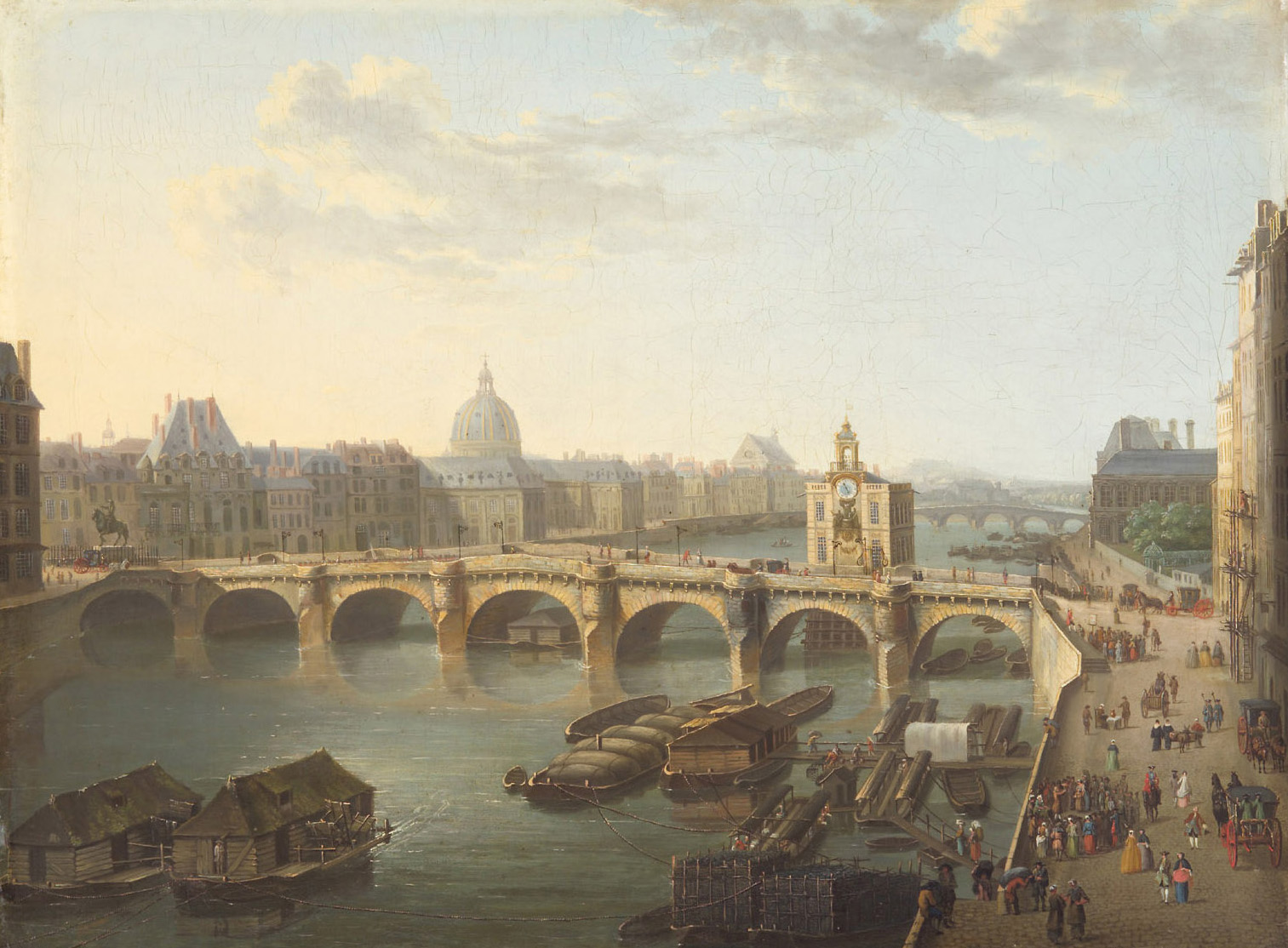
37 links between two banks, sometimes giving the impression they are preventing the islands from following the current and flowing into the sea with the Seine. The often have their feet in the water, seven-league boots that resist and endless current. When you stop in front of their piers, you see these prows, motionless yet cutting through the waves as if they returning to their source. Every bridge has it own story, of course, but some deserve a little more attention.
_____________________________
Episode 1 : The Pont Neuf
The Pont Neuf is the oldest of all bridges that can be seen today in Paris. Other older wooden bridges have disappeared. Other, built after it, have also been destroyed and replaced. Construction began under Henry III in 1578, and was completed in 1607 un Henry IV, whose equestrian statue, inspired by antiquity, stands between the two parts of the bridge. It was melted down during the Revolution and restored…during the Restoration. The Bridge has stood the test of time and shows no signs of weakness. Its foundations are made of wood, like those of Notre Dame or Venice, consisting of forests of piles driven into the bed of the Seine. Together with the Place Dauphine (name after the Dauphin, the future Louis XIII), it constitutes one of the first urban development projects in Paris.

Giuseppe Canella – Ile de la Cité and the Pont-neuf, seen from the quai du Louvre, 1832 (Carnavalet Museum)
This bridge was new, not because it had just been built, wich was the case for all bridges at the beginning of their career, but new in terms of its novelty and modernity. Is was the first to be built of stone in a long time; the first to have sidewalks, allowing people to walk safely ans sheltered from the dirt of the roadway; the first not to be covered with houses. The were indeed shops above each pier, like the watchtowers of a fortified castle, but they were few and far between and had no upper floors.
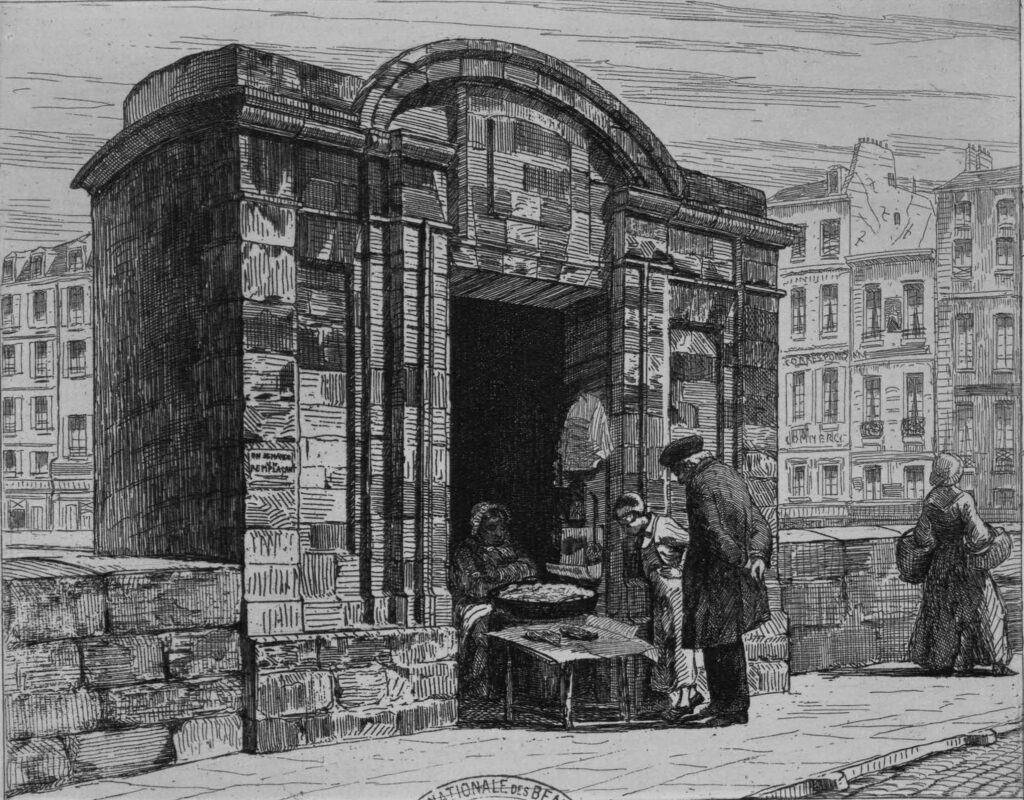
Under these stalls were storage rooms and cellars, nestled in thickness of the piles and connected to each other by underground passageway beneath the bridge deck.
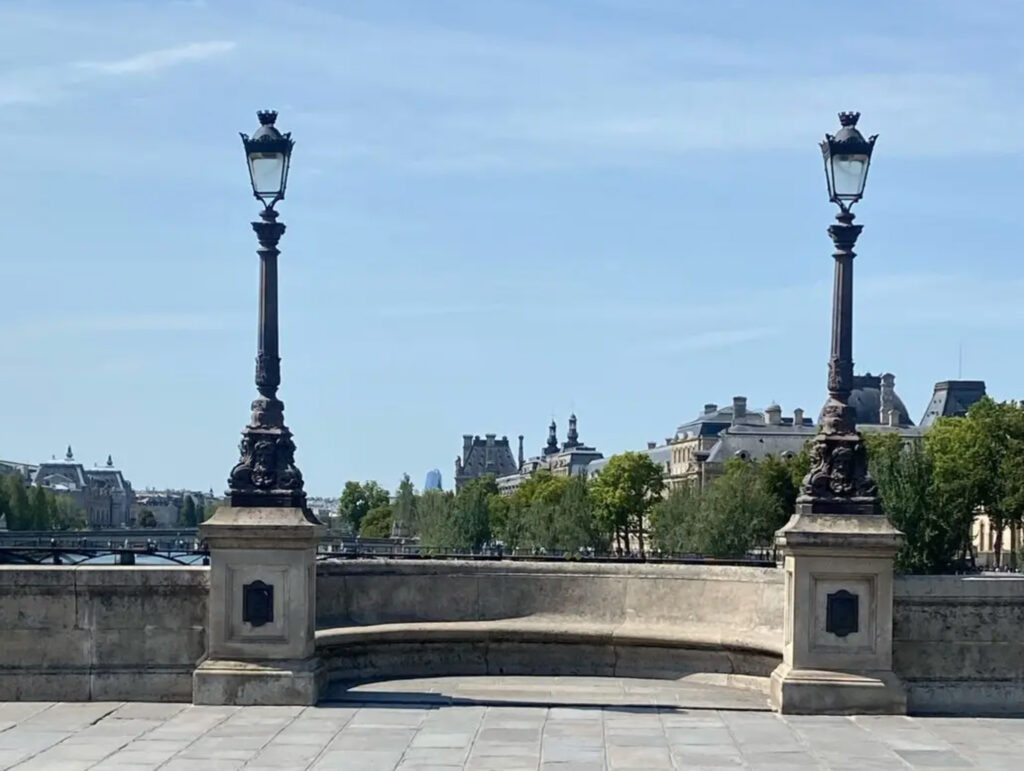
The alcoves overlooking the Seine were cleared, of the shops that occupied them in the 19th century, and they are now among the most beautiful public benches in Paris. As a teenager, it was one of my favorite destinations for bike or moped trips. I would sit there for hours, overlooking the Seine, reading and basking in the sun.
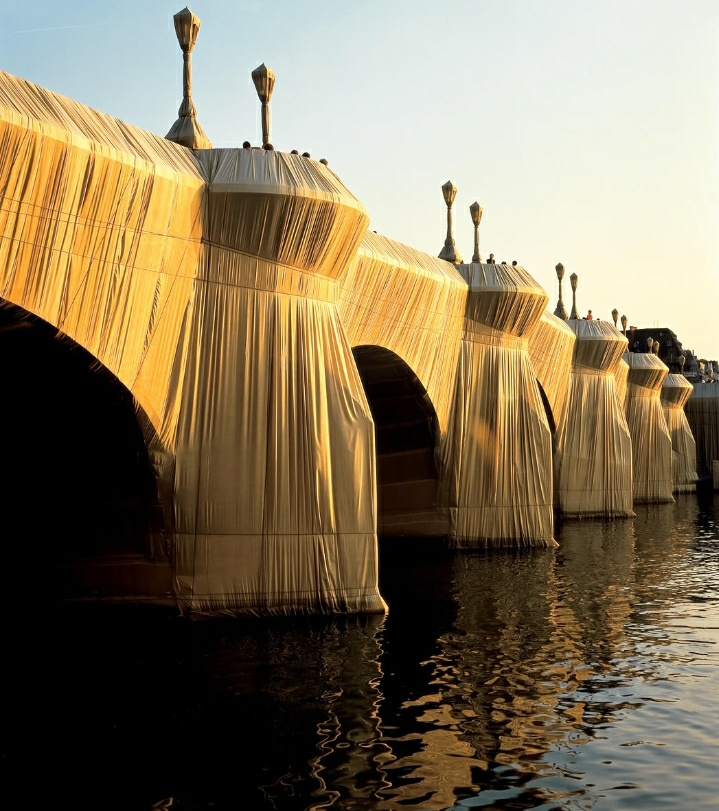
And since I’m on the subject of personal memories, I really liked Christo and Jeanne-Claude’s wrapping of the bridge in 1985. At the time, I was studying for my exam to move up to the second year of architecture school. My school was very close by, on the left bank. The stairs leading down to the Square du Vert Galand had also been covered in canvas; the sounds of the city were muffled there. Sitting on the steps, I found a place to concentrate, which was quite precious to me.
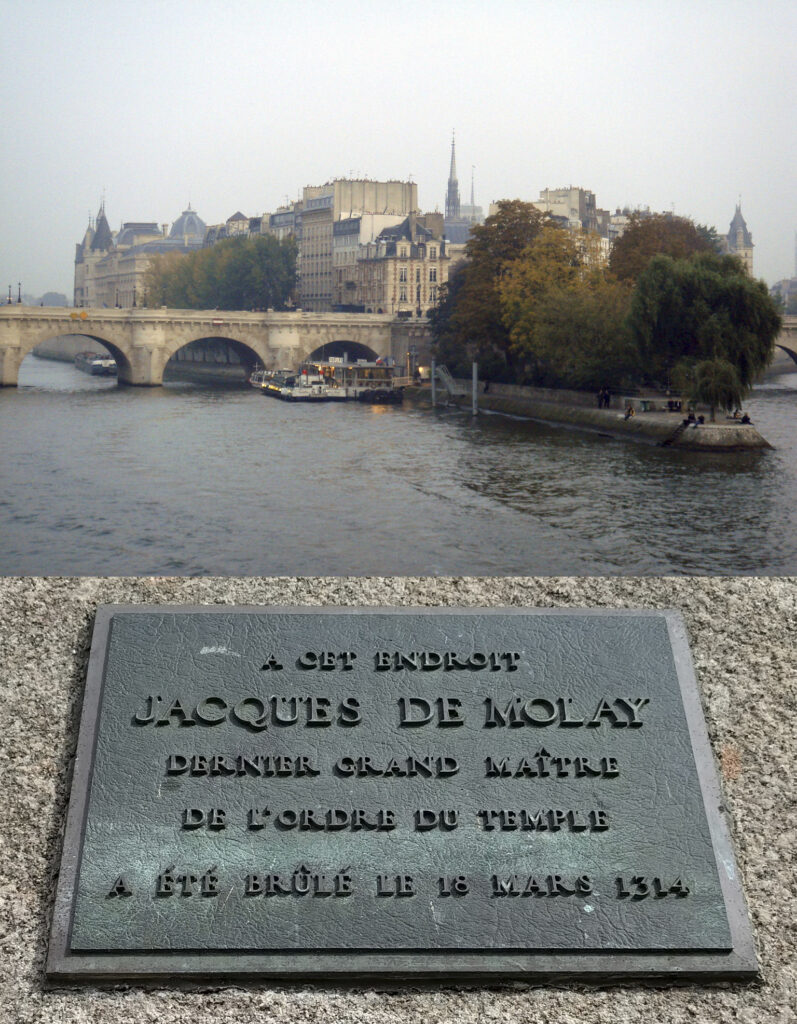
On the massive retaining wall that contains this staircase, below, downstream a small plaque reads that Jacques de Molay, the last Grand Master of the Knights Templar, was burned here in March 1314. The pyre was probably somewhere under the current Place Dauphine.
We do not know what his last words were to Pope Clement and King Philip (IV, also known as the Fair), but Maurice Druont, in Les Rois Maudits (The Accursed Kings) depicts him cursing his executioners with these words :
“Pop Clement! Knight Guillaume! King Philip! Within a year, I summon you to appear before the court of God to receive your juste punishment. Damned! Damned! May you all be damned to the thirteenth generation of your races!.”
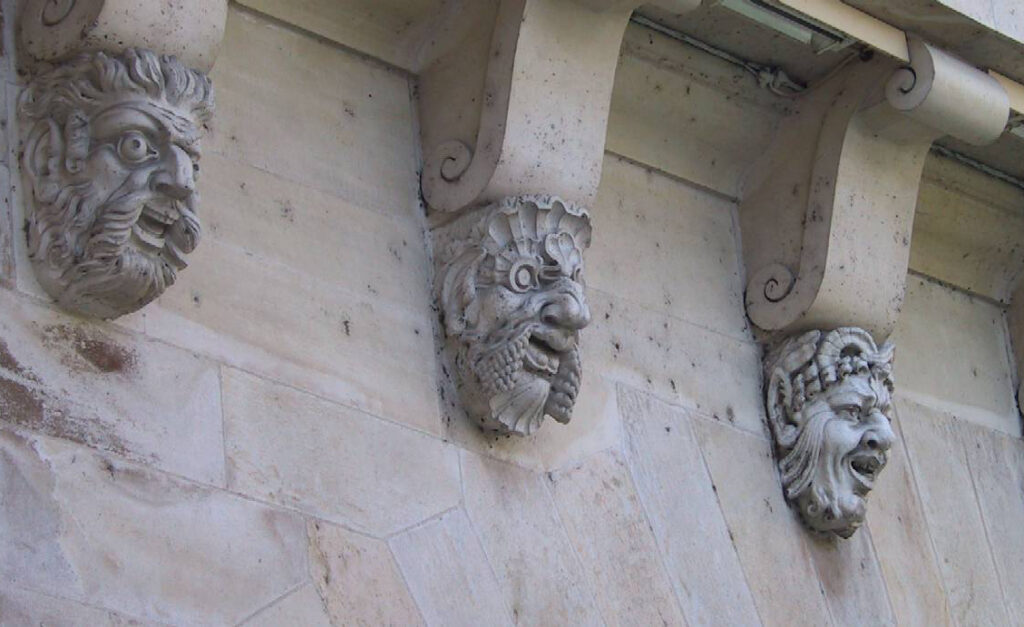
The mascarons of the Pont-Neuf
With the mascarons of the Pont, the Samaritaine pump, the Monnaie lock-dam, and undoubtedly many other curiosities, this end of the Ile de la Cité, this floating cradle of Paris, is a dense place, always at the forefront… Is it a bow or a stern? It all depends on your point of view.
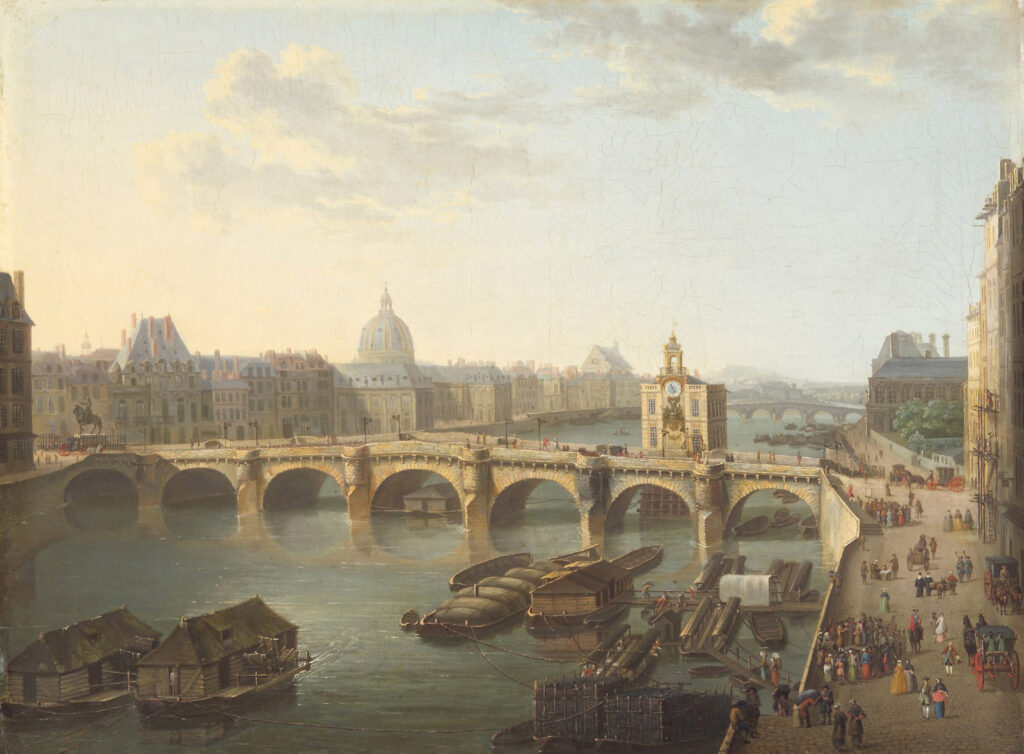
View of the Pont Neuf and the Samaritaine Pump in Paris in 1743 – Hyacinthe de la Peigne – Museum of Fine Arts of Vienna
______________________________________
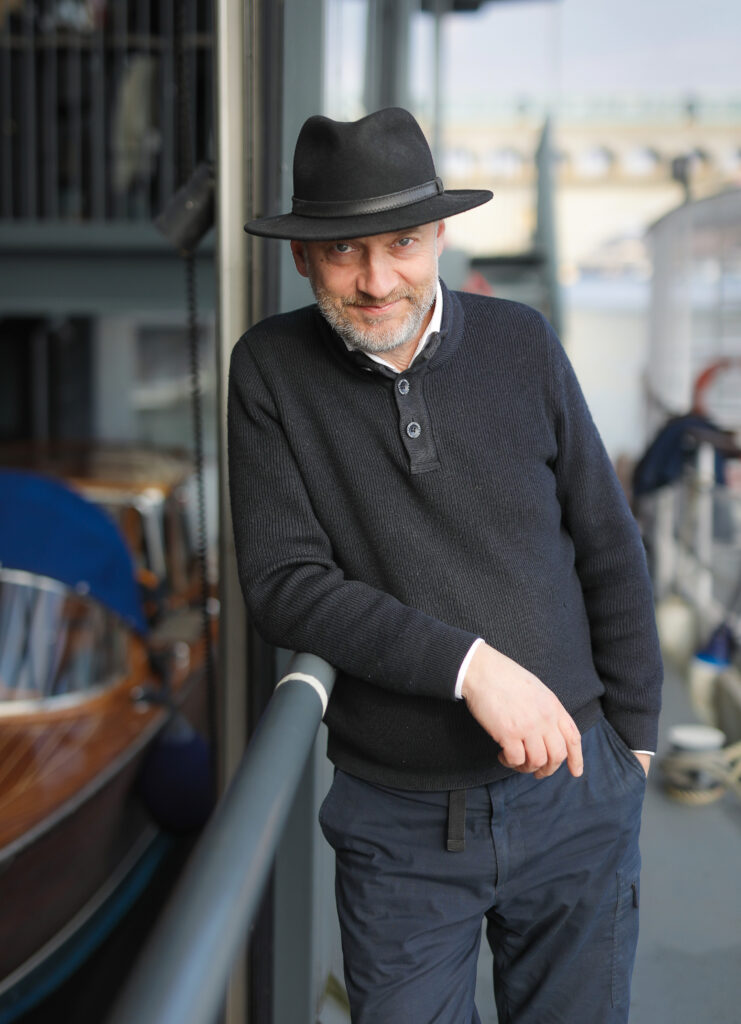
The article is written by Philippe Fournié
OUR NEWS
We invite you to discover the unique world of the Seine, where occasional strollers and everyday workers rub shoulders, where boats of all sizes meet and greet. In the light of today's fluvial challenges, Seine Avenue is carrying out renovations and innovations to adapt its activity. Our aim is to contribute to the sustainable use of the river, so that we can share more of its magic.
